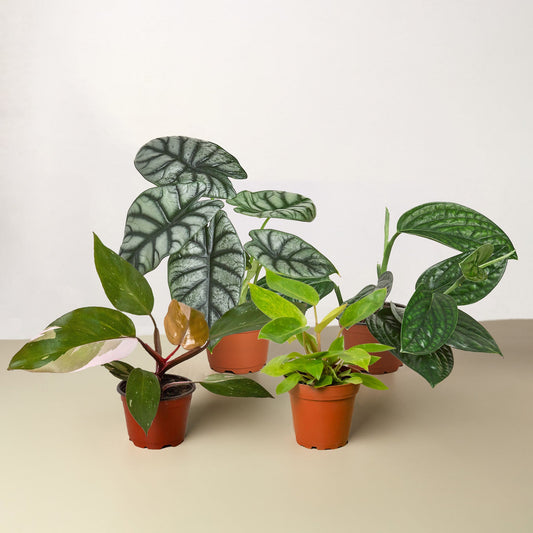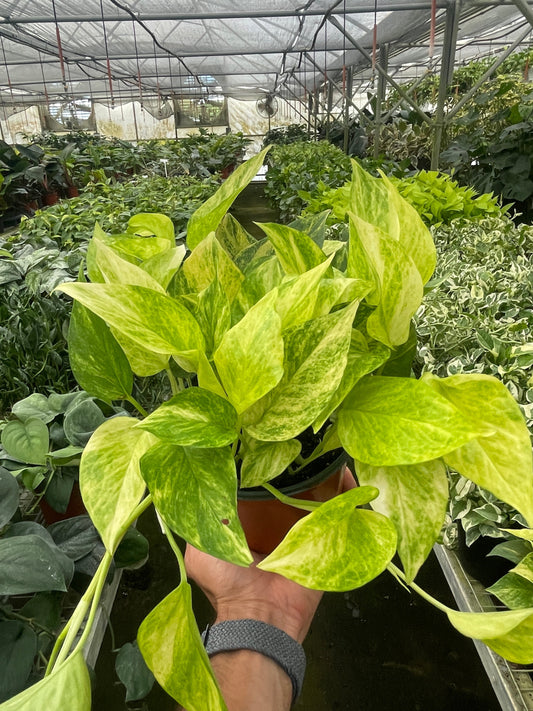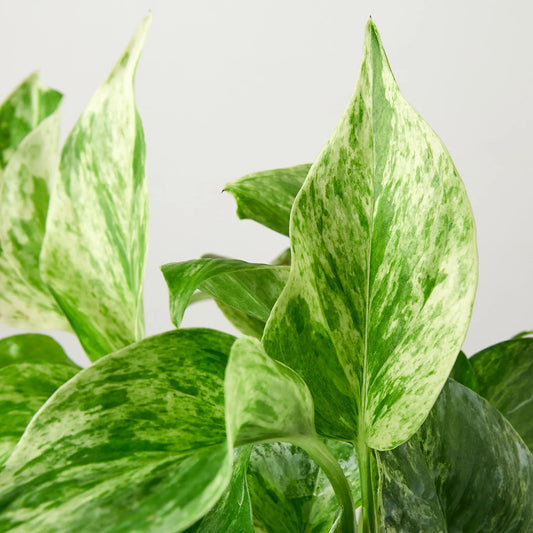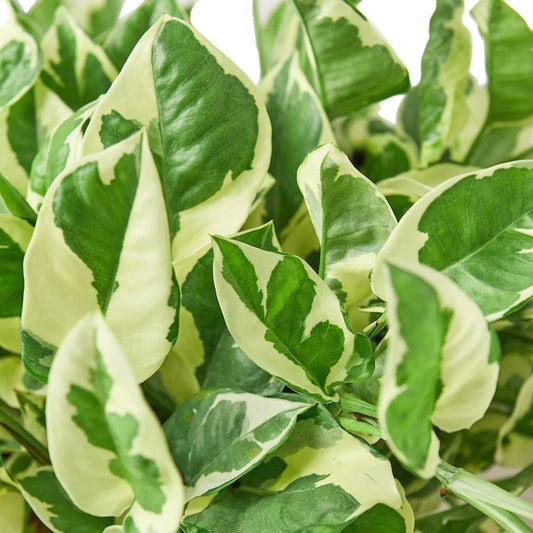Philodendron Ring Of Fire Aerial Roots: Everything You Need to Know
Cafe Planta Team
Philodendron 'Ring of Fire' is not just a fun name to say, but it’s also a plant that adds a touch of the exotic to your home. With its striking variegated leaves that boast shades of cream, red, and green, it’s no wonder this plant is a popular choice among plant lovers. One fascinating feature of this philodendron, though, often raises questions: its aerial roots.
This article will walk you through everything you need to know about these intriguing roots. We’ll cover what they are, why they exist, and how you can care for them to keep your Philodendron 'Ring of Fire' thriving. From practical tips on maintaining healthy aerial roots to creative ways of incorporating them into your home decor, we’ve got you covered.
What Are Aerial Roots?
Aerial roots might sound like something out of a plant science fiction novel, but they're actually quite common in the plant world. Simply put, aerial roots are roots that grow above the ground. Unlike the typical roots you’re used to seeing buried in the soil, these roots extend outwards, often seeking support or moisture from the air.
In their natural habitat, many philodendrons, including the 'Ring of Fire', are epiphytic. This means that they grow on other plants rather than rooting in the soil. Aerial roots help them attach to trees and other structures, allowing them to climb and reach better light sources. For your potted Philodendron, these roots might just be hanging out, quite literally, without a tree to cling to.
So, what should you do with them in a home setting? You might choose to let them dangle freely, giving your plant a wild, jungle-like appearance. Alternatively, you could gently tuck them into the potting mix or provide a moss pole or stake for support.
Why Do Plants Develop Aerial Roots?
Understanding why plants like the Philodendron 'Ring of Fire' develop aerial roots helps us appreciate their needs and how best to care for them. Aerial roots serve several purposes:
- Support: They help the plant stabilize itself by anchoring to surfaces, allowing it to climb and spread.
- Moisture and Nutrient Absorption: In humid environments, these roots can absorb water and nutrients directly from the air.
- Breathing: Aerial roots can help with gas exchange, similar to how leaves work.
In a home environment, you may notice that your Philodendron's aerial roots don't seem to be doing much. This is because the conditions aren't quite like the wild, humid jungles where these plants naturally thrive. However, understanding their purpose can help you make informed decisions about how to care for them.
For example, if your home is particularly dry, you might consider misting the aerial roots occasionally to mimic the humidity they would experience in nature. This can help keep the plant healthy and prevent the roots from drying out.
How to Care for Your Philodendron's Aerial Roots
Now that we've got a good grasp of what aerial roots are and why they exist, let's talk about caring for them. While they might seem a bit unruly, these roots are an essential part of your plant's health and well-being.
Here are some simple tips to help you manage your Philodendron's aerial roots:
- Regular Misting: If your home lacks humidity, misting can make a world of difference. A gentle spritz of water on the aerial roots can keep them from drying out.
- Provide Support: Consider using a moss pole or a trellis. These tools give the roots something to cling to, which can help your plant grow more robustly.
- Leave Them Be: It's perfectly fine to let the roots dangle. They add a natural charm and showcase the plant's unique growth habits.
Remember, nature designed these roots for climbing and reaching. While your living room might not provide the same climbing opportunities as a jungle, you can still create an environment that supports their natural growth tendencies.
Incorporating Aerial Roots into Your Home Decor
Now, let's get creative! Those aerial roots can be more than just a fascinating botany lesson; they can also become a part of your interior design. If you're looking to give your space a unique, natural touch, here are a few ideas:
- Natural Art: Let the roots dangle freely from a hanging basket or pot. The natural, cascading effect can be quite striking, adding an organic element to your decor.
- Use a Trellis or Moss Pole: Not only does this provide support for the plant, but it also adds height and dimension to your plant display. It's an excellent way to create a living sculpture.
- Terrarium Display: If you're feeling ambitious, create a mini-jungle terrarium. Use the aerial roots as part of the design to mimic their natural habitat.
Don't forget, these roots are a testament to the plant's resilience and adaptability. By incorporating them into your home decor, you're not only caring for your plant but also celebrating its natural beauty.
Common Issues with Aerial Roots
Even with the best care, you might encounter a few hiccups with your Philodendron 'Ring of Fire's aerial roots. Let's face it, plants can be a bit unpredictable! Here are some common issues and how to address them:
- Drying Out: If the roots look shriveled or dry, increase humidity around the plant. Misting or using a humidifier can help.
- Overgrowth: Sometimes, roots can grow too long and become unmanageable. You can trim them back slightly, but avoid cutting too close to the main stem.
- Root Rot: If you notice a bad smell or mushy roots, it could be root rot. Ensure your potting mix is well-draining and avoid overwatering.
It's all about balance. A little bit of attention goes a long way in keeping those roots healthy and happy.
Potting and Soil Care for Philodendron 'Ring of Fire'
While aerial roots are a unique feature, don't forget about the roots beneath the soil. Proper potting and soil care are vital for the overall health of your Philodendron 'Ring of Fire'.
Here are a few tips to get it right:
- Choose the Right Soil: Opt for a well-draining potting mix. A mix that includes peat, perlite, and orchid bark works well.
- Pots with Drainage: Always use pots with drainage holes. This prevents water from sitting at the bottom and causing root rot.
- Repot When Needed: If you notice the plant is root-bound or growth has slowed, it might be time to repot into a slightly larger container.
Proper potting supports the entire plant, including those aerial roots, by ensuring that nutrients and water are effectively distributed.
Design Tips for Creating a Plant-Filled Space
Philodendron 'Ring of Fire', with its vibrant leaves and fascinating roots, can be a centerpiece in your home. Here are some design tips to help you create a plant-filled oasis:
- Grouping Plants: Combine your philodendron with other plants to create a lush, green corner. Mix different textures and heights for visual interest.
- Use Plant Stands: Elevate your plant to give it the spotlight it deserves. Plant stands can also help create layers in your plant display.
- Natural Light: Position your plant near a window with filtered light. This not only helps the plant thrive but also highlights its natural beauty.
Playing around with plant placement can transform your space into a serene retreat. Let your creativity guide you!
Dealing with Pests and Fungal Issues
Even with the best care, pests and fungal issues can sometimes rear their ugly heads. Here’s how to tackle them:
- Common Pests: Watch out for spider mites, aphids, and mealybugs. A gentle soap and water spray can help manage these pests.
- Fungal Issues: If you notice spots on the leaves, it could be a fungal issue. Ensure good air circulation and avoid overhead watering to reduce the risk.
- Regular Checks: Make it a habit to check your plants regularly. Early detection can prevent a small problem from becoming a big one.
Staying vigilant is key. With a little attention, you can keep your Philodendron 'Ring of Fire' healthy and pest-free.
Final Thoughts
The Philodendron 'Ring of Fire' is a stunning plant with its captivating aerial roots and vibrant foliage. By understanding these roots, you can give your plant the care it needs and even use them to enhance your home decor.
At Cafe Planta, we love helping you make your plant journey successful. Whether you're curious about aerial roots or need advice on the best houseplants for your home, we're here to help. Feel free to reach out via email or on Instagram. Let's grow together!



















